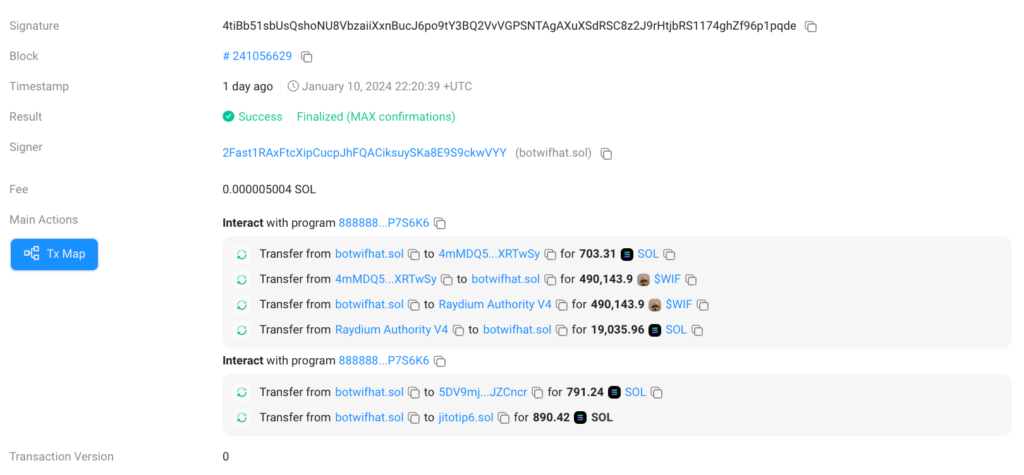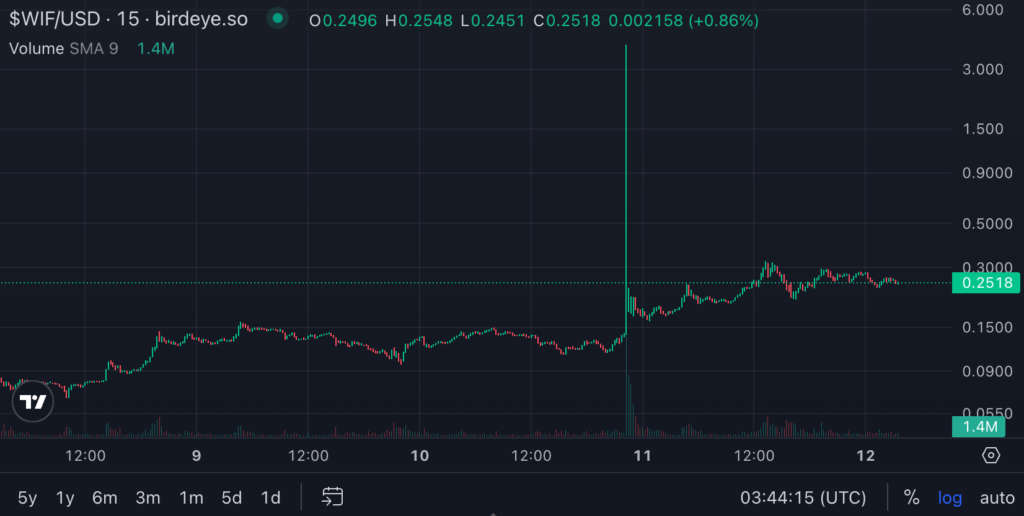
Solana MEV Bot Strikes: $1.7M Gain in Memecoin Trade
During a single questionable trade, a trader’s $9 million purchase of memecoin Dogwifhat (WIF) allowed the Solana MEV bot to generate an astounding $1.7 million.
This trade took place “in the most inefficient way possible.” The data provided by Solscan shows that the Solana MEV bot, operated by 2fast, exchanged 703 Solana for 490,000 WIF and then exchanged the same amount of WIF for 19,035 SOL within the same transaction bundle. This resulted in the bot making a profit of $1.73 million.

Machine learning bots, also known as Solana MEV bots, are computer programs that automatically search blockchain networks for lucrative trading opportunities and then automatically carry out certain orders.
The development arm of the Solana liquid staking protocol Jito, Jito Labs, created the tool utilized by the bot. Bots can utilize this tool to search for the largest amount of value that can be extracted and place bids for inclusion in the transaction bundle.
The tool functions similarly to flashbots on the Ethereum network. This rapid arbitrage maneuver was made possible as a result of a trade that was conducted by a single trader known as Zero Trading.
This trader purchased an astounding $8.9 million worth of memecoin in a single order. The excessive bid was placed in a pool with little liquidity, resulting in the order being completed at about $3 for every WIF token.
This is almost 1,400% more than the token was worth at the time. As a result of the subsequent and quick decrease that occurred after the transaction, the trader experienced an instantaneous loss of 92% of their funds.
On January 11, a developer known as Pland claimed in a post on X (formerly known as Twitter) that the Solana MEV bot used a straightforward backrunning approach to profit from the trader who executed the WIF order in the most “inefficient way possible.”
It is generally agreed that backrunning is less detrimental to a blockchain network since it just takes advantage of the arbitrage opportunity that is given by a hugely mispriced deal and does not have any effect on the initial trade.
This type of attack, unlike the more malicious “sandwich” attacks, does not involve sandwiching an order between two transactions to cause the first offer to be repriced.
This frequently affects the initial trade price, causing users of blockchain technology to incur losses. The price of WIF had a momentary surge that reached as high as $4 as a result of the single transaction.

While the trader is still significantly out of pocket for their misplaced order, the big candle spurred Degens to begin purchasing WIF again, with the memecoin registering a gain of fifty percent from the point immediately following the dip in price.





